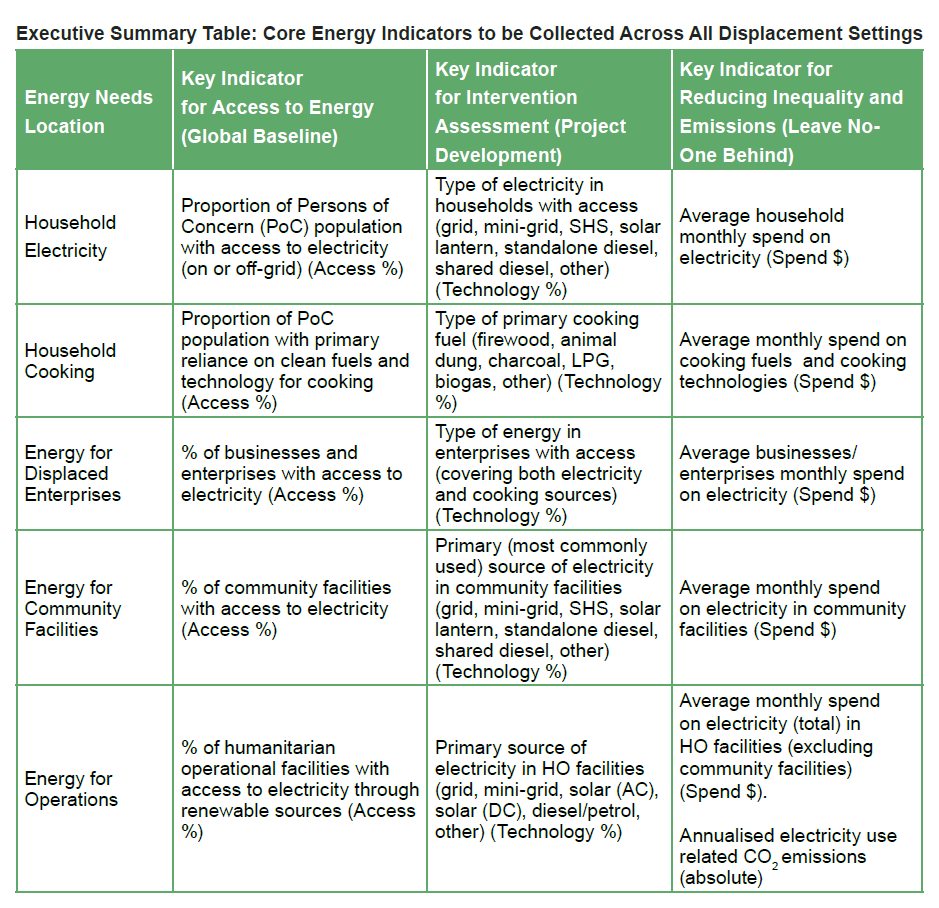In this section
In this sectionCurrently, there is no globally-coordinated measurement of energy access levels within the humanitarian sector. The humanitarian sector lacks a comprehensive overview of how many displaced people have access to energy within the humanitarian contexts. Crisis affected populations, such as refugees and migrants, often fall into a “grey zone” as they are under the remit of UN and NGO partners rather than national governments. Slow progress on gathering data on energy access has also been a function of missing standard procedures and limited guidance on data collection to measure energy access rates. Overwhelmingly, the energy needs of displaced communities are not well understood.
To support change and data collection across the humanitarian energy sector, the UN-led Global Platform for Action on Sustainable Energy in Displacement Settings (the GPA) has produced a number of resources to guide practitioners and donors in understanding humanitarian energy data needs. The aim of this work is to support the production of high-quality, usable energy data for the humanitarian sector and practitioner partners in delivering sustainable energy solutions. During 2020 and 2021, several core resources on this topic were produced by the GPA community:
- Discussion workshops on data needs were held in 2020 to develop knowledge across the sector, including a report on the outcomes of this process.
- A detailed mapping of indicators and forms of data used with the humanitarian energy sector, including detailed analysis and an issue summary which this blog is based on.
- A research overview discussion paper to outline the research and data needs within the humanitarian energy sector.
To further discussion on humanitarian energy data, the GPA has worked with partners in the humanitarian and energy sectors to map out the types of energy indicators most needed to establish a global state of play on humanitarian energy. It is hoped that alignment of institutions around these central indicators may lay the foundation for harmonised data collection and analysis in forced displacement settings. Measuring what matters is critical to establish both a global baseline to demonstrate progress towards sustainable development and climate goals, and support positive learning within the humanitarian sector on where energy needs are most severe. The full report ‘Mapping Indicators for Humanitarian Energy Access and the Decarbonisation of Operations: Supporting the Alignment of Data Practices on Sustainable Energy in Situations of Forced Displacement’ is online here.
Within the report, 16 core indicators are outlined for humanitarian energy which cover access at the household, enterprise, community facility, and institutional levels for both electricity and cooking needs. These core indicators are summarised in the table below. We urge all organisations and projects working in the humanitarian sector to collect these indicators, and to share the results across the GPA community, in order to enable a global baseline on energy access to be produced. Such data will support measuring progress on greenhouse gas emissions and achieving Sustainable Development Goal (SDG 7) on clean energy access for all displaced people by 2030.
Last updated: 21/01/2022

